Hope you all had a Merry Christmas! Welcome to 2017! Today I’m delivering the promised post on the digital work for “The Dangers of Christmas Shopping.”
The finished watercolor
After scanning a watercolor like this into Photoshop, I will sometimes see errors in proportion and design. When this happens my left hand involuntarily picks up the nearest sharp object and attempts to stab me in the face with it. As you can imagine, I’ve moved all my sharp objects to my right side. However, even with this sensible precaution in place, I sometimes will use Photoshop to make adjustments to the image that slide the offending elements back in to place. And after some nip and tuck my left hand is usually settled enough for me to put the guinsoo knives and throwing stars back in their usual place next to the lamp.
A moving picture, showing the before and after.
I take this step because I tend to work very transparently in this method so that the digital effects blend well with the pencil and watercolor. In opaque media such as oil you could slowly maneuver your objects and proportions around a bit more. Transparent watercolor is less forgiving of this kind of late-game heavy lifting, so I work all of that out here so I am not wrestling against it for the remainder of the painting.
As you can see below, the early phases are built up slowly with transparent color, using multiply and soft light layers for shadow and color, then color dodge and screen layers for lights and sharp details,
Transparent steps
Only after I have really established the painting do I go back in with normal layers and opaque brushes to really punch up details and designs. Then in the final stages we move up to normal layers and hard light layers to really pull up the intensity and solidify shapes and details. I save hard light for last because it can really overpower an image if you aren’t careful with it. Used in small doses it is wonderfully vibrant. (Sort of the digital equivalent of painting with cadmium red.)
The lesson here is sometimes you have to stop in the middle of the painting and rework the problems before they turn what could have been a great painting into a mediocre painting. Another mediocre raindrop destined to be forgotten in a sea of other mediocre raindrops. Take the time early on. You;’ll thank yourself later and your painting will be so much stronger for it.
…And also because if you don’t tackle the painful task of reworking a painting early on, one of your hands might stab you in the face because maybe it got bitten by a zombie who was wearing loafers and a morning jacket that you ran into while doing midnight Christmas shopping at 7 Eleven. I’m not saying I got bit by a zombie of that description at 7 Eleven or that I have a belt strapped around my arm to stop the undead infection from spreading. I’m just saying, that sort of thing could happen to anybody and it’s not weird. We as a modern society should probably be okay with people who have zombie hands.
You need to be prepared for this sort of thing as an artist.
I hope you enjoyed this post and learned something, (or at least just enjoyed the post. I’ll take what I can get) If you would like a print of the piece above or to take a look at the original watercolor, check out
our store here.
If you ever want me to post about a specific topic, please let me know in the comments below. Happy 2017 you guys!


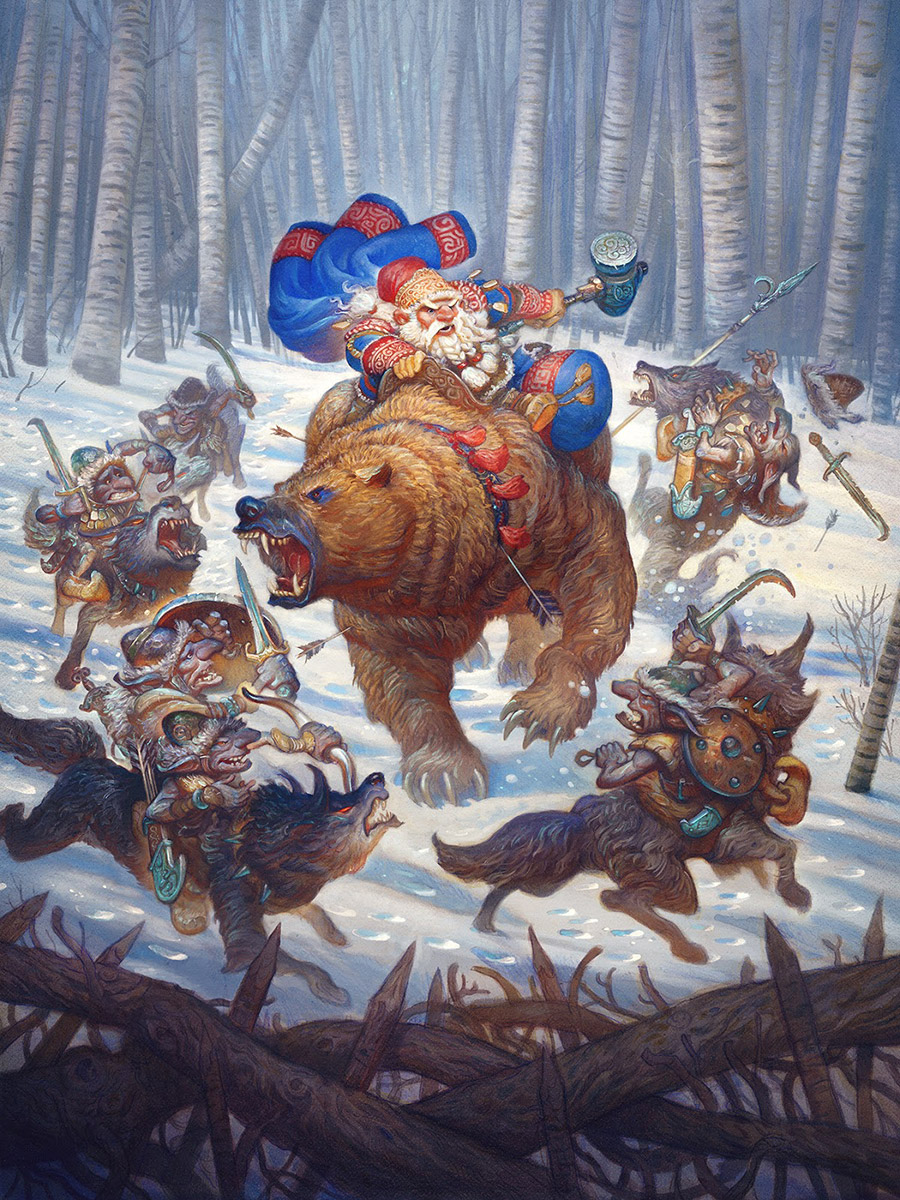
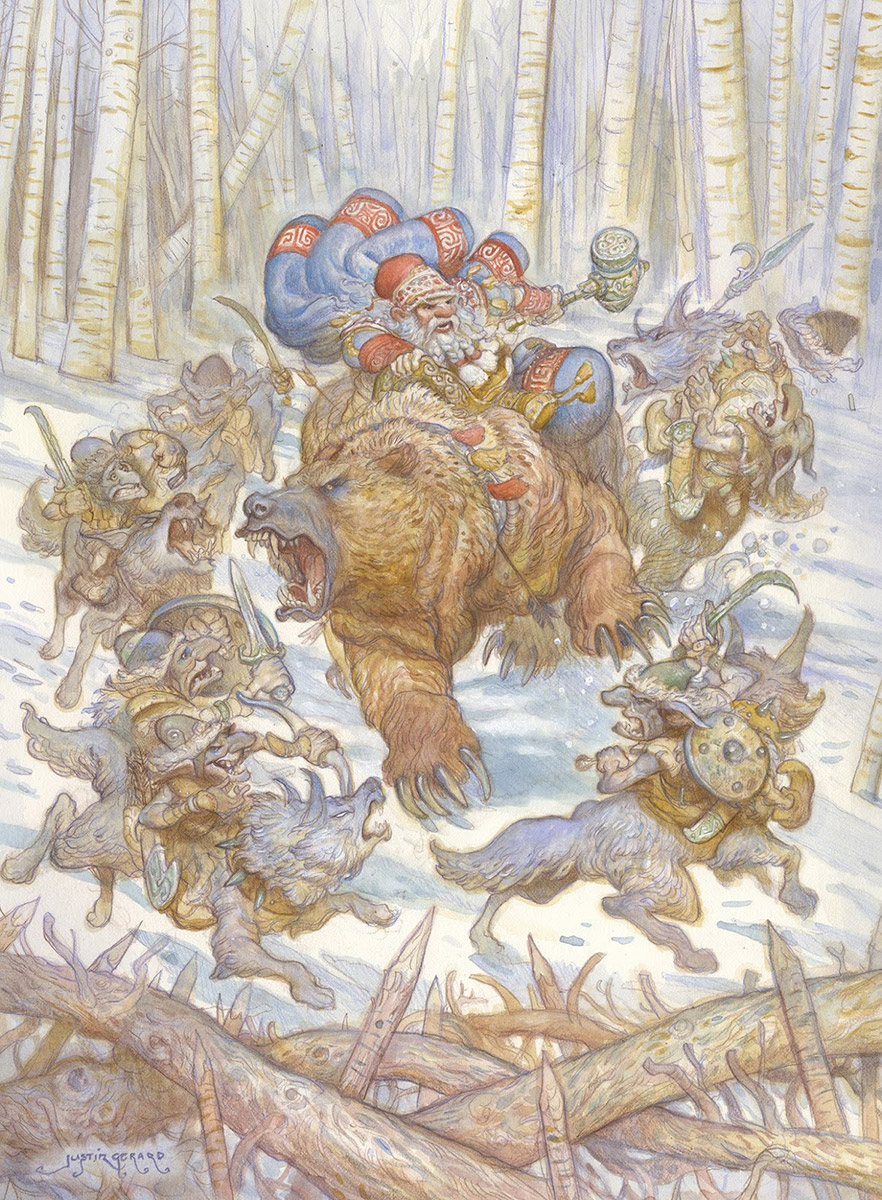
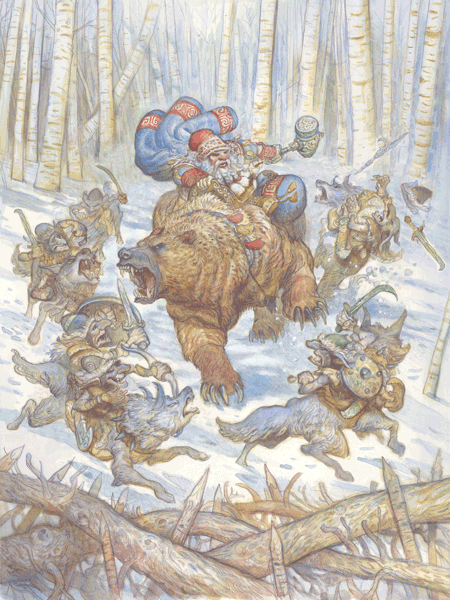
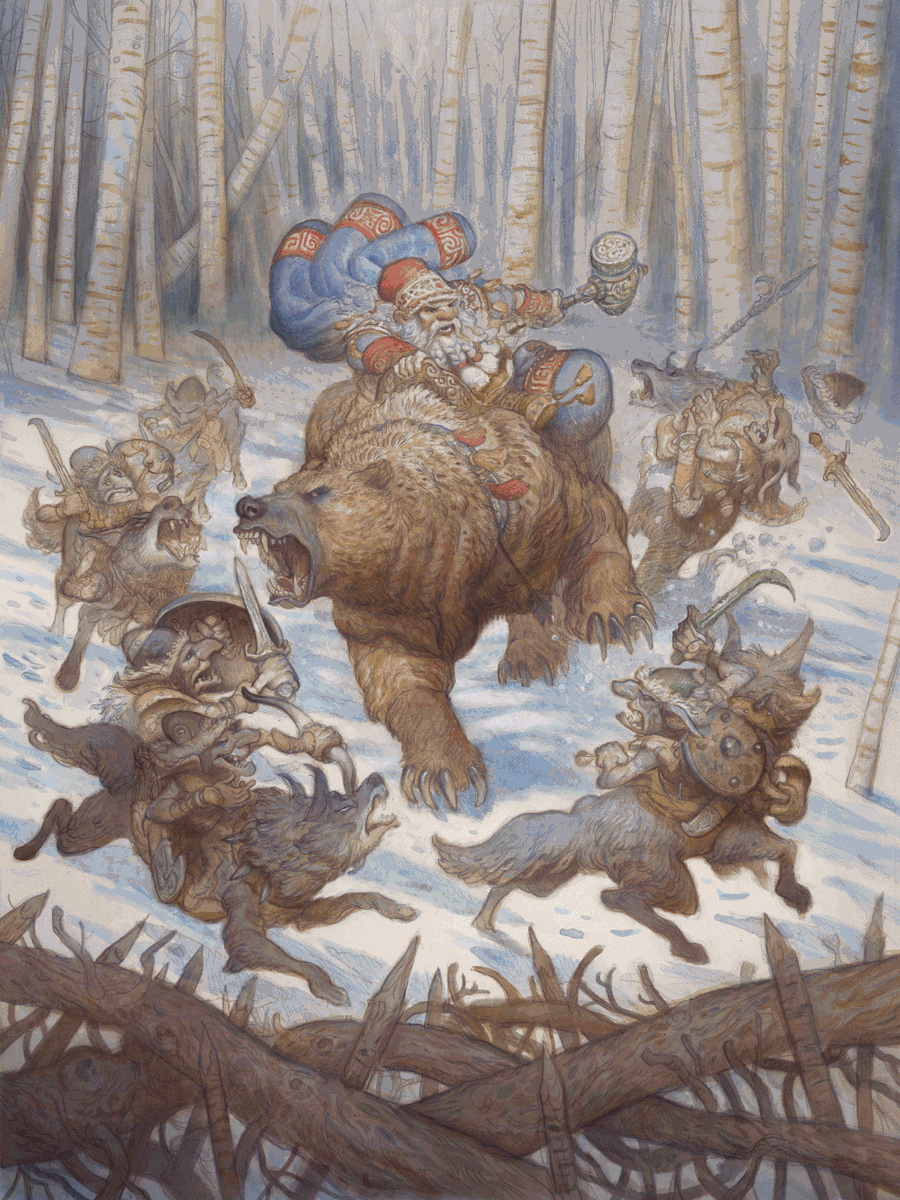
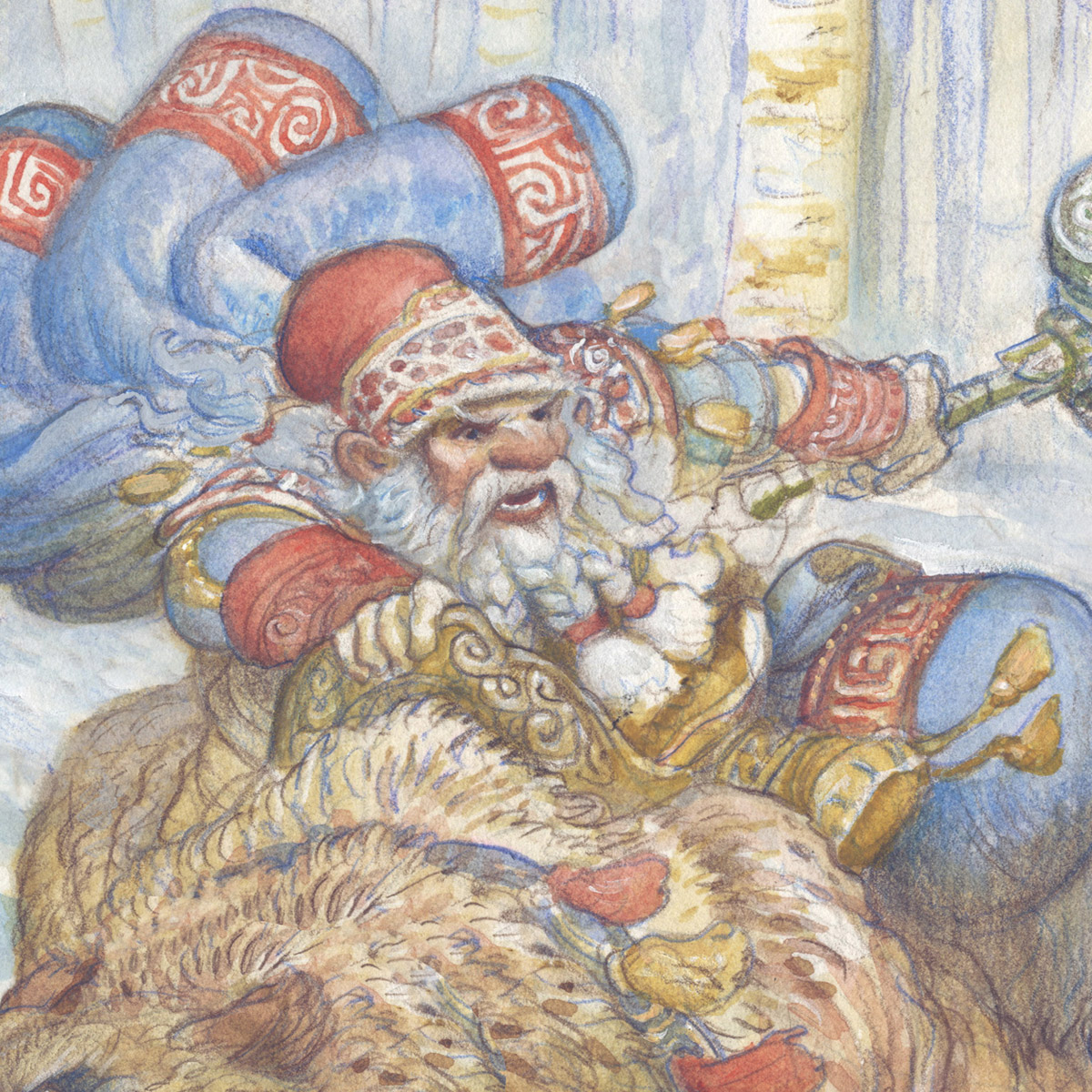
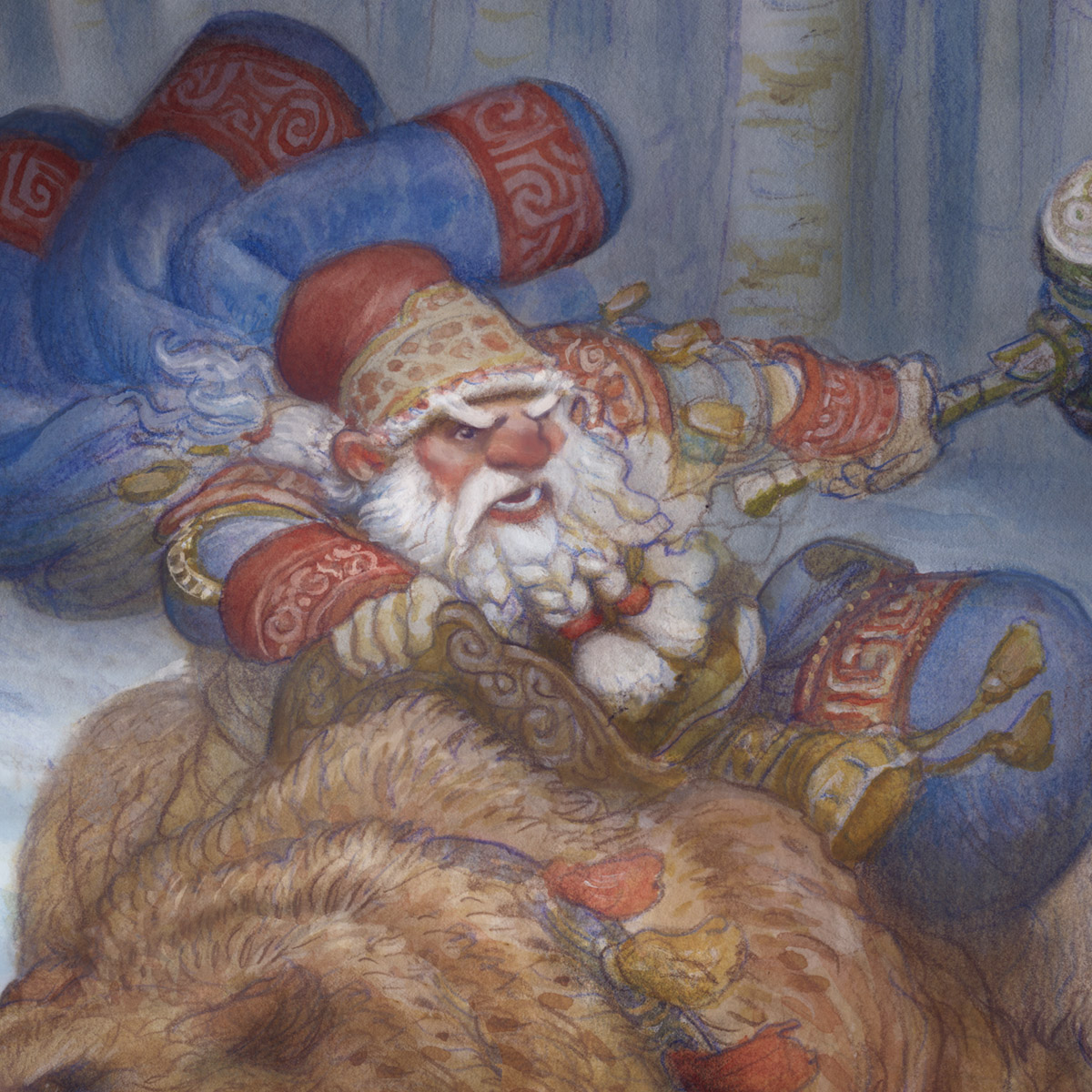
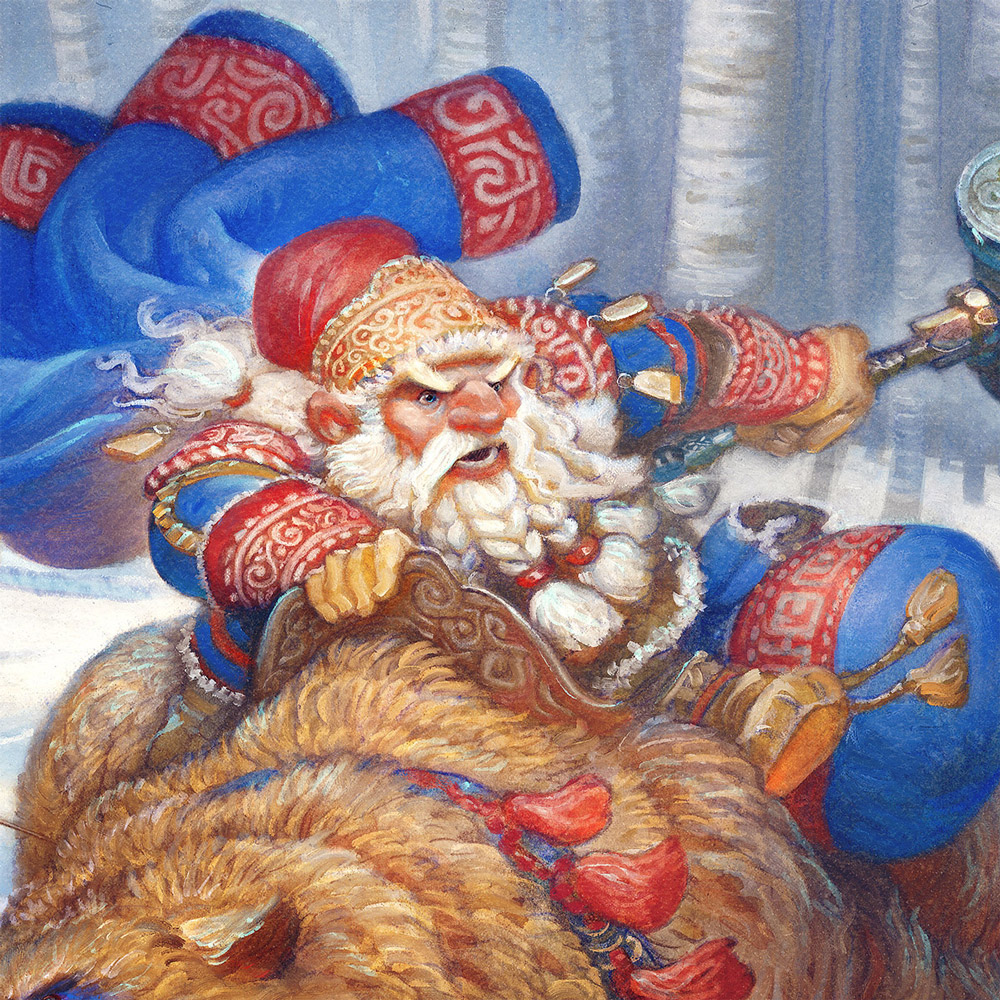

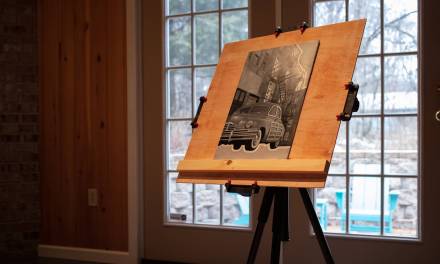
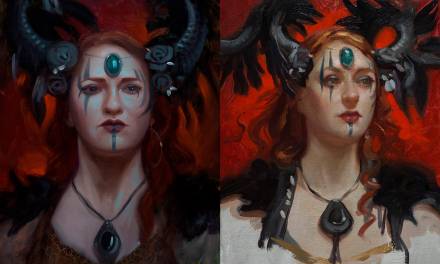
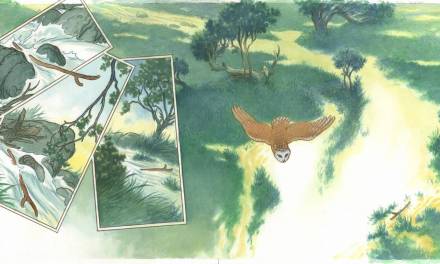
Yay, now 2017 is off to a good start! Those changes were drastic, yet well worth it, but doing that on a commission piece … that would be a complete new start. One terrific painting!!! (Take care of that arm.)
Fantsastic piece, Justin. I've always been curious as to how much reference you use. You always seem to feature characters with highly designed armor and clothing, and I wonder how much of that is pulled from real life and how much is left to the imagination. Might be an interesting topic for a post.
Are those .Gifs? Very cool seeing the transformation.
Yes. Made in photoshop using gunpowder and witchcraft. So… I'm not sure that I am doing them right but they do make it much easier to show the progression!
I do tend to be sparse on the specific reference for these more imaginative images but there are a few odd tips and tricks that might be helpful. I'll note it down for a future post!
I’ve personally experienced burnout from trying to juggle digital work and holiday shopping. This post really hits home.